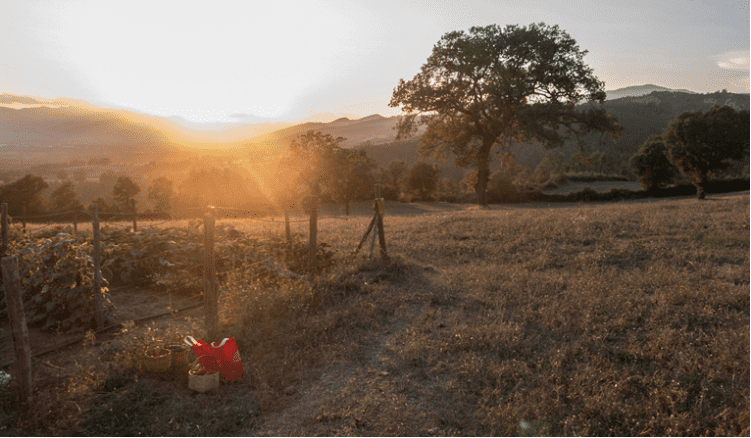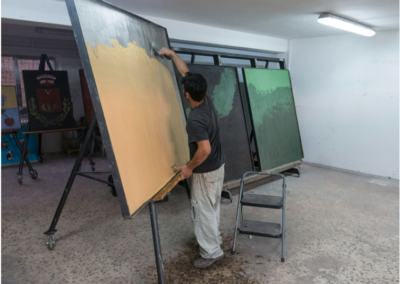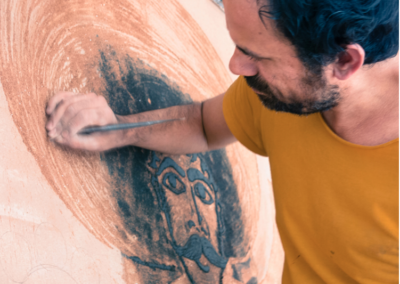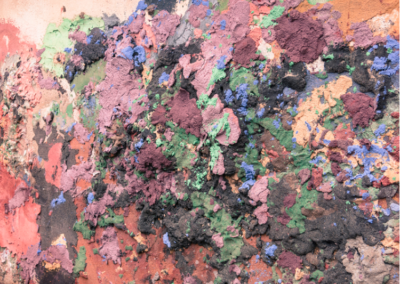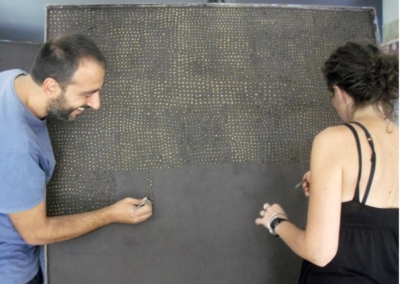An internal area of Basilicata – that part of Italy we only talk about in the summer – that tries to combine art, oil and nature.
The landscape is characterized by the widespread presence of the archaic – and oil is its impure residue – by a memory tenaciously attached to the rock, evident yet secret like a latent sensation: Primo Levi’s “calanchi” themselves.
In Montemurro, on the Pertusillo dam, the “Scuola del Graffito” tries to hybridize the signs of this memory with contemporary languages, recovering the relationship with the material, with the earth and with the stones -calcite, sandstone and obsidian- through the practice of art.
In these territories, historically perceived as immobile and marginal, a new centrality of the vast area is experimented, through a balance between urban and rural, experiencing a new meaning of the category of “local”, which is not only that piece of the assisted and immobile world of pensions and public employment, of hours playing cards outside the bar, of the “illegal immigrants” of progress, of young people who run away, of the wall of Avellino (that urban phenomenon for which it is so complicated to move ideas, goods, flows, from the outside to the inside, from the cities of the sea to inland Italy), but proposes itself as a humus of industriousness and community cohesion.
Development is not only a question of functional utility, but also of social capital, that is, of identifying and accompanying those actors capable of multiplying trust and cohesion, and the languages of art can be a gentle detonator, not only the most refined form of financial return.
Born in 2003 by the will of its founder Giuseppe Antonello Leone, the Scuola del Graffito is a laboratory of territorial development with peculiar characteristics.
The town of Montemurro becomes a cultural laboratory that aims to combine the rediscovery of ancient techniques and the languages of new technologies: rediscovering an archaic technique, absolutely unique, and making it a way of making art not as an instrument of elitist exclusion, but as a tool for symbolic (and material) sharing with which to attempt to mend the territory through a new story of collective and participated creation. An incredibly fitting story in the current context of the cultural industry, in which creative individuals and innovative companies are the drivers of development and growth, supported by the multiplication of opportunities for collaboration and sharing that make the exchange of tacit knowledge possible.
The graffito polistrato consists in a practice in a certain sense opposite to painting, or rather halfway between painting and sculpture, a work by subtraction through the excavation of a palimpsest of layers of colored mortar. The sand, in this process, is absolutely a smart element, in which is sedimented a millenary core of knowledge, absolutely inseparable from the local dimension, but that rewrites itself continuously, just through the initiatives of the School of Graffito.
Not only because the School has brought more than 50 Italian and international artists to create works installed in the town, making the center of the Val d’Agri a museum on an urban scale in continuous evolution, but for the desire to be a permanent territorial laboratory, and in network with the many realities close to it, such as the Leonardo Sinisgalli Foundation, the project “I luoghi della Pittrice”, but also the nearby badlands of Aliano and the suggestions of Craco. The same willingness is needed in the search for an optimal trade-off, a mix between tangible and intangible assets, through membrane laboratories of communities with a strong sustainable vocation, open and with a vision of the vast area no longer as a marginality but as a centrality of ecological and cultural networks, capable of recognizing themselves in the territorial potential to the point of elaborating or inventing a new identity without losing memory (Persico).
The 2015 edition, precisely in this perspective, bears the title “Rurale Contemporaneo”, as an invitation to visit with contemporary eyes the complex landscape of the rural inland areas in cultural, environmental, social and anthropological terms, according to the idea developed with the economist Pasquale Persico, the artist Mimmo Longobardi and the urbanist Nicola Giuliano Leone. Six artists took part in this year’s edition, heterogeneous in terms of origin and expressive research (Beatriz Camussy, Carlos Yamil, Gerardo De Castillo, Riccardo Maniscalco, Salvatore Manzi, Patrizia Grieco) in dialogue – as can be seen from the documentation film – with urban planners, economists, chemists, others with the environment and the landscape. The initiative has been included within the AIR network – european network of artist residencies.
